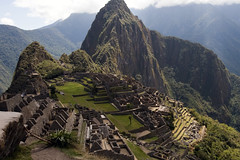| 4794406804 | Columbian Exchange | An exchange of goods, ideas and skills from the Old World (Europe, Asia and Africa) to the New World (North and South America) and vice versa. |  | 0 |
| 4794406805 | Encomienda | A grant of land made by Spain to a settler in the Americas, including the right to use Native Americans as laborers on it |  | 1 |
| 4794406806 | Atlantic slave trade | Lasted from 16th century until the 19th century. Trade of African peoples from Western Africa to the Americas. 98% of Africans were sent to the Caribbean, South and Central America. | 2 | |
| 4794406807 | Bartolome de las Casas | First bishop of Chiapas, in southern Mexico. He devoted most of his life to protecting Amerindian peoples from exploitation. His major achievement was the New Laws of 1542, which limited the ability of Spanish settlers to compel Amerindians to labor; however his suggestion to replace Natives with Africans was won he would regret. |  | 3 |
| 4794406808 | Maize | An early form of corn grown by Native Americans |  | 4 |
| 4794406809 | Hopewell | A mound builder society that was centered in the Ohio River Valley from about 200 B.C to AD 400 |  | 5 |
| 4794406810 | Anasazi | A Native American who lived in what is now southern Colorado and Utah and northern Arizona and New Mexico and who built cliff dwellings |  | 6 |
| 4794406811 | Iroquois | A later native group to the eastern woodlands. They blended agriculture and hunting living in common villages constructed from the trees and bark of the forests |  | 7 |
| 4794406812 | Cherokee | Are a Native American people historically settled in the Southeastern United States (principally Georgia, the Carolinas and Eastern Tennessee). Linguistically, they are part of the Iroquoian-language family. In the 19th century, historians and ethnographers recorded their oral tradition that told of the tribe having migrated south in ancient times from the Great Lakes region, where other Iroquoian-speaking peoples were located. |  | 8 |
| 4794406813 | Inuit | A member of a people inhabiting the Arctic (northern Canada or Greenland or Alaska or eastern Siberia) |  | 9 |
| 4794406814 | Olmec | The first Mesoamerican civilization. Between ca. 1200 and 400 B.C.E., these people of central Mexico created a vibrant civilization that included intensive agriculture, wide-ranging trade, ceremonial centers, and monumental construction. |  | 10 |
| 4794406815 | Maya | Mesoamerican civilization concentrated in Mexico's Yucatan Peninsula and in Guatemala and Honduras but never unified into a single empire. Major contributions were in mathematics, astronomy, and development of the calendar. |  | 11 |
| 4794406816 | Aztec | (1200-1521) 1300, they settled in the valley of Mexico. Grew corn. Engaged in frequent warfare to conquer others of the region. Worshipped many gods (polytheistic). Believed the sun god needed human blood to continue his journeys across the sky. Practiced human sacrifices and those sacrificed were captured warriors from other tribes and those who volunteered for the honor. |  | 12 |
| 4794406817 | Inca | Their empire stretched from what is today Ecuador to central Chili in the Andes Mountain region of South America. Called the Children of the Sun. |  | 13 |
| 4794406818 | Montezuma II | The last Aztec emperor. Here he is on vacation at the beach, just days before being captured and killed by Cortés in 1520. |  | 14 |
| 4794406819 | Atahualpa | Atahualpa, the last Sapa Inca of the Inca Empire before the Spanish conquest. Atahualpa became emperor when he defeated and executed his older half-brother Huáscar in a civil war sparked by the death of their father, Inca Huayna Capac, from an infectious disease. He was held captive and executed by Pizarro. |  | 15 |
| 4794406820 | Tenochtitlan | Capital of the Aztec Empire, located on an island in Lake Texcoco. Its population was about 150,000 on the eve of Spanish conquest. Mexico City was constructed on its ruins. |  | 16 |
| 4794406821 | Machu Picchu | 8,000 ft above sea level between mountain peaks has a sun temple, public buildings, and a central places, possible religious center or an estate of wealthy nobility. |  | 17 |
| 4794406822 | Aztec calendar | 365 days, divided into 18 months each with 20 days. |  | 18 |
| 4794406823 | Terrace farming | The cutting out of flat areas (terraces) into near vertical slopes to allow farming. Terrace farms appears as steps cut into a mountainside. This adaptation allowed both the early Chinese, and the Inca of Mesoamerica to grow enough food for their large populations. |  | 19 |
AP US History Period 1 (1491-1607) Flashcards
Primary tabs
Need Help?
We hope your visit has been a productive one. If you're having any problems, or would like to give some feedback, we'd love to hear from you.
For general help, questions, and suggestions, try our dedicated support forums.
If you need to contact the Course-Notes.Org web experience team, please use our contact form.
Need Notes?
While we strive to provide the most comprehensive notes for as many high school textbooks as possible, there are certainly going to be some that we miss. Drop us a note and let us know which textbooks you need. Be sure to include which edition of the textbook you are using! If we see enough demand, we'll do whatever we can to get those notes up on the site for you!

